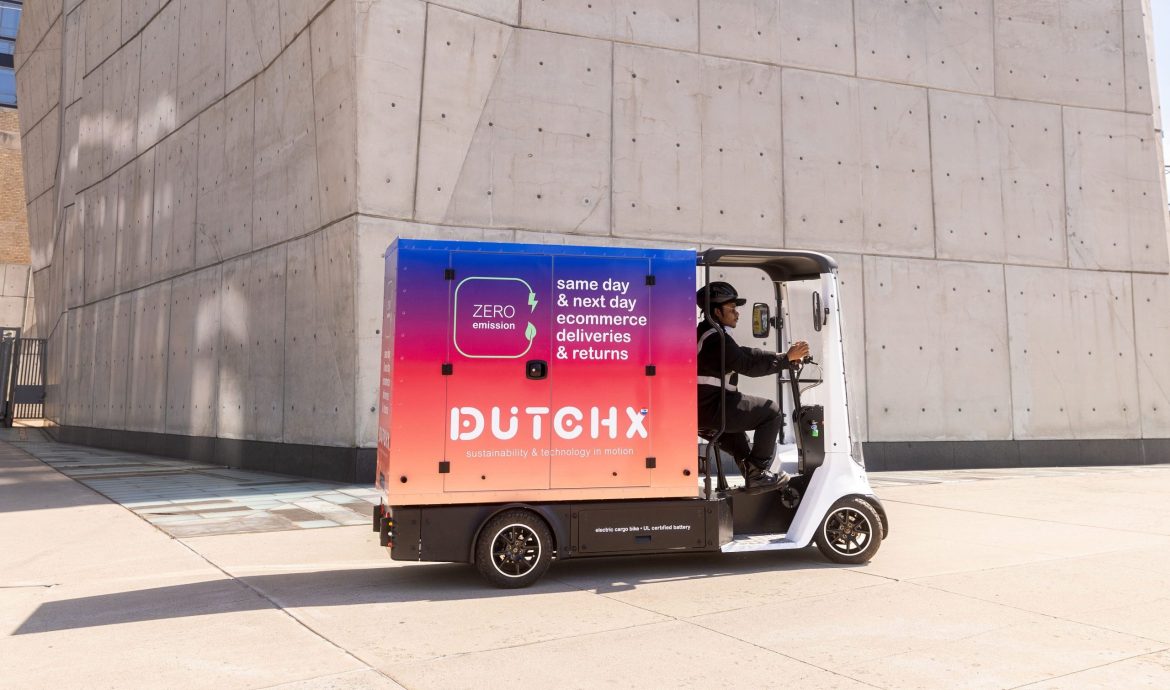

Within the complex network of contemporary urban logistics, a transformation is underway, motivated by the rising need for streamlined, eco-conscious transportation solutions. DutchX is at the front line of this historic transformation, leading by example with its sustainable, technology-driven delivery and return operations. At DutchX, we firmly believe that zero-emission vehicles and micromobility represent the future of last mile delivery. This conviction is reflected in our status as the largest zero-emission last mile operator in the US, a testament to our unwavering commitment to pioneering sustainable urban logistics solutions.
Micromobility refers to a mode of transportation that involves small, lightweight vehicles typically used for short-distance travel. This category includes devices like electric scooters, bikes, and other compact transporters. The primary aim of micromobility is to offer an efficient, affordable, and eco-friendly alternative to traditional transportation methods. Micromobility solutions have gained significant popularity in urban areas due to their convenience, ease of use, and minimal environmental impact. These elements are crucial in reducing both traffic congestion and pollution.
Electric cargo bikes and quads are at the heart of our transformative micromobile fleet at DutchX. With their high cargo capacities, these vehicles transport dense loads and are 100% free of carbon emissions. Additionally, electric cargo bikes and quads can deliver twice as many parcels per hour on average compared to vans. Moreover, our pioneering venture at DutchX into maritime logistics via Blue Highway underscores our unwavering commitment to multifaceted, sustainable mobility solutions.
The rise of micromobility is not devoid of hurdles despite its numerous benefits. An obvious challenge lies in the lack of adequate infrastructure to support these modes of transport. Certain cities are ill-equipped with dedicated lanes or parking spaces for electric bikes, cargo bikes, and scooters, making it challenging for users to navigate safely and efficiently. However, cities are increasingly recognizing the need for dedicated lanes and parking areas for micromobile vehicles, paving the way for safer and more efficient navigation for users.
Regulatory frameworks may also pose a challenge. Existing laws can fail to address the nuances of micromobility, leading to uncertainty regarding where these vehicles can be used and parked or how drivers should adhere to traffic rules. This regulatory ambiguity can create barriers for both users and service providers looking to integrate micromobility into city environments.
However, addressing these challenges is growing in necessity as micromobility offers critical solutions to accelerating problems like city congestion and greenhouse gas emissions. For example, in April, a new law was enacted in NYC which allows larger pedal-assisted bikes to now operate on bike lanes. This progressive move is expected to influence other cities to evaluate their regulations, and enact similar legislation. Additionally, to conquer challenges that arise DutchX works closely with government agencies to expand the appropriate programs and infrastructures to let progress flourish.
Dense cities with growing populations and complex roads are excellent ground for the micromobility movement. Conventional delivery methods struggle to meet the demands of final mile logistics within these complex landscapes. Micromobile fleets, leveraging dedicated bike lanes instead of contending with traditional street traffic and congestion, emerge as ideal solutions to these modern urban challenges. Furthermore, their alignment with urban sustainability goals, facilitating reduced environmental footprints, amplifies the draw of these eco-conscious alternatives.
The emergence of micromobility represents a significant advancement in last mile delivery solutions. This movement, characterized by the integration of advanced technology and a strong emphasis on sustainability, highlights the possibilities inherent in compact, sustainable vehicles.
As cities advance and grow, adopting these vehicles presents an opportunity to improve logistical efficiency while prioritizing environmental considerations. Embracing micromobility contributes to a more sustainable and conscientious approach to city development, creating a transportation landscape that aligns with eco-friendly practices and streamlined logistics.